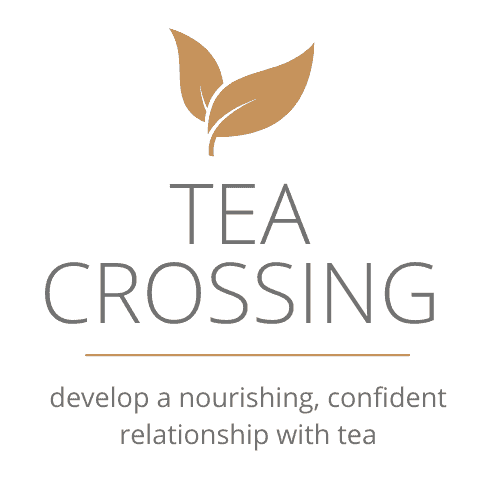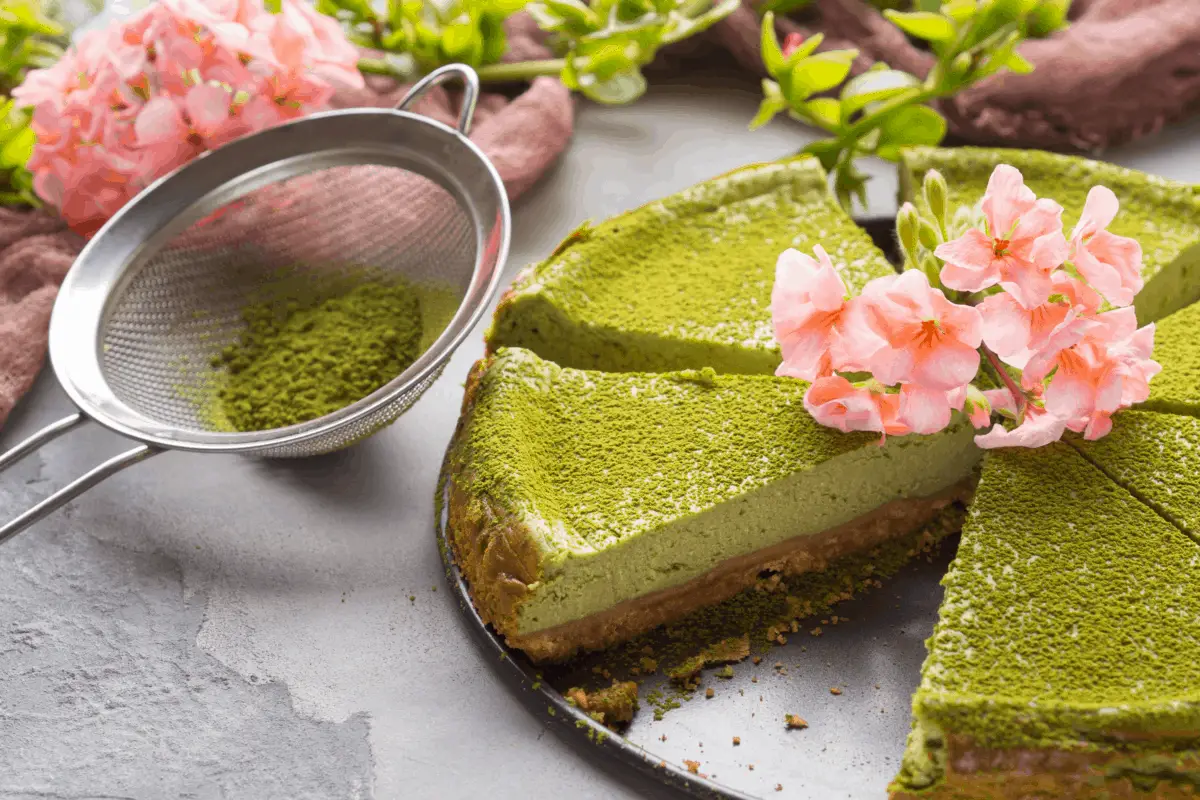Matcha tea is definitely not new. It’s been around since the 12th century. However, it is relatively new as far as mainstream foods are concerned. It seems like everywhere you turn, there’s a new matcha tea offering. And, for good reason. There are plenty of health benefits that high-quality matcha tea offers. However, the truth of the matter is that matcha tea doesn’t exactly taste wonderful on its own. So, how can you make matcha tea taste good? Let’s figure it out.
By combining matcha tea with other ingredients, you can still get the benefits of drinking plain matcha tea, without the bitterness. Adding matcha tea to smoothies and lattés are good options. You can also add matcha to cooked items like pancakes, eggs, and rice, and sprinkle on yogurt.
If you’re interested in the benefits that match tea has to offer, but you’re unsure about the flavors associated with just drinking it plain, then keep reading. There are plenty of ways to make matcha tea taste good at home.
In addition, you’ll boost the health benefits of any food you are currently eating.
You may also want to read my article Why is Matcha so Expensive? 10 Reasons It’s Worth the Cost and Is Matcha Tea Green Tea? 8 Differences That Matter.
“By combining matcha tea with other ingredients, you can still get the benefits of drinking plain matcha tea, without the bitterness. Adding matcha tea to smoothies and lattés are good options. You can also add matcha to cooked items like pancakes, eggs, and rice, and sprinkle on yogurt. “
TEA CROSSING
How to Make Matcha Tea Taste Good
Let’s jump right into the fun stuff first. Later, we’ll cover how beneficial matcha is, and how to choose the right one for your matcha tea plans. But first things first, let’s explore some different ways to add matcha to your diet, in a tasty way.
Matcha tea can be expensive. In particular, the ceremonial grades of matcha that are truly intended to be mixed and sipped with intention, are quite pricey. There are also culinary-grade options that are less expensive and are intended for mixing and cooking with other foods.
Later in this article, I’ll cover the grades of matcha so that you understand your options.
For now, grab your matcha powder, and your creativity, and let’s get started.
Here are some ways to get your daily dose of matcha, while making it taste good.
This sections covers 6 ways to use matcha in beverages, and the next section covers 11 ways to use matcha with food. All for a total of 17 creative, healthy, yummy ways to include matcha in your life.
Matcha Tea Beverages: 6 Terrific Options
Yes, matcha tea powder is clearly meant to be consumed as a drink. It is tea, after all.
But, the bold, and often slightly bitter taste of matcha is really strong, and is often an acquired taste.
Using it as an ingredient in any of these will have you singing matcha’s praises in no time.
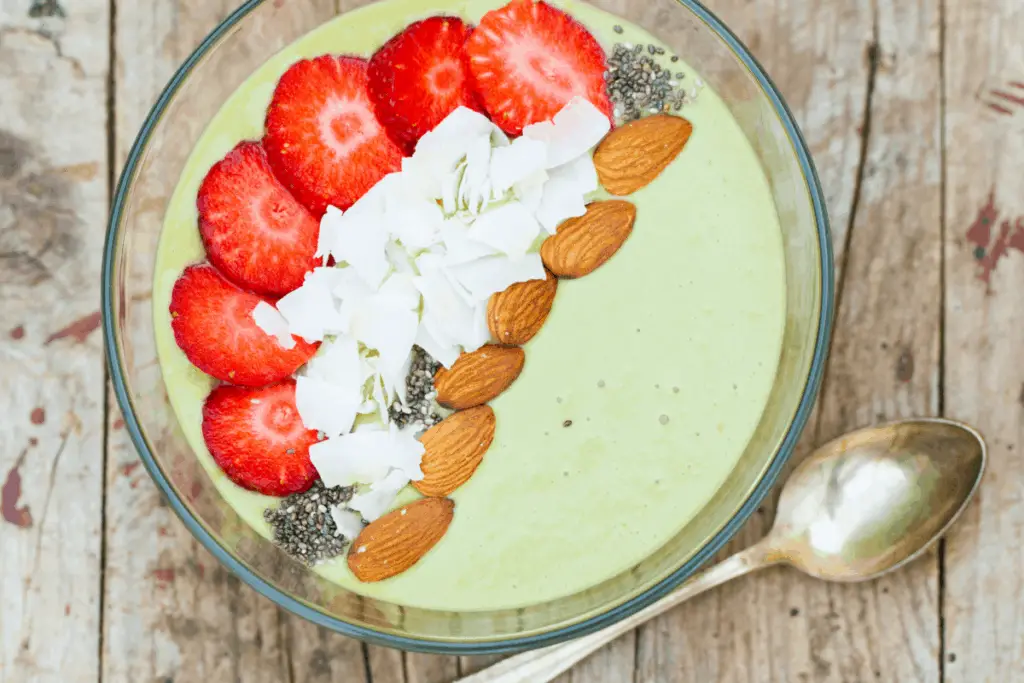
Beverage #1: Matcha Tea Latte
This is probably the most standard way to drink matcha, without going all in on just the matcha.

You’ll need:
- Matcha powder
- Milk of your choice (consider almond milk or coconut milk)
- Ice
- Jar with a lid (a tight fitting lid is a must)
- Agave or honey
The rest is pretty simple. Mix just about one teaspoon of matcha with enough water to make a small paste. This is an important step to avoid chunky matcha. Once you have the paste, then add a cup of milk, topped off with as much agave or honey as you’d like. Start small, you can always add more later. Add some ice and the lid, then shake.
Soon you’ll have a creamy, smooth, and also kind of pretty latte to sip. You can also do a hot version of this, just skip the ice and use hot water instead. But it’s a matter of personal preference, of course.
Beverage #2: Matcha Tea Smoothies
There are all kinds of add-ins that you can sneak into a smoothie, but matcha adds a delicious bonus flavor and an extra dose of healthy. It’s ideal for smoothies.
This is truly one of my favorite options for incorporating matcha into my day. I try to have at least one green smoothie with added matcha every day.
But what can you use along with matcha tea powder for your smoothies? What flavors mesh with the matcha?

Try some of these, along with just one teaspoon of matcha, to make your own flavor combos:
- Bananas: frozen works really well
- Spinach
- Avocado
- Flax, chia seeds, or hemp seeds
- Vanilla extract
- Milk: almond milk, coconut milk, and even soy milk all work well with matcha flavors
- Mango: again, frozen is a good option in smoothies
- Pineapple: frozen is best for smoothies
- Ginger: just a touch adds a little extra flavor
- Blueberries
- Cucumber
While any of these work well in smoothies to bring out the matcha flavor, you can use other fruits, too. But, they’re better if you’re trying to hide the matcha flavor. If matcha just isn’t your thing, but you still really want it in your life, then maybe try an orange or strawberry in your smoothie to help soften the matcha flavor.
Beverage #3: Matcha Mojito
Who says you can’t have a little extra fun while drinking your matcha? Add a little matcha to a standard non-alcoholic mojito recipe.

You’ll just need your one teaspoon of matcha powder, of course, and:
- 1 lime, juiced
- 5-6 mint leaves, depending on how minty you want to go
- Ginger ale: try diet for fewer calories and less syrupy taste
- Agave
- Ice
Make a paste of the matcha powder with just a splash of water. Add it to the muddled mint leaves and lime juice. Pour in the ginger ale and a bit of agave, then shake it up with ice. Hello, delicious, refreshing summer cocktail!
Beverage #4: Matcha Tea Lemonade
Try adding matcha tea powder to your favorite, standard lemonade recipe. The usual one teaspoon will add just enough matcha flavor to let you know it’s in there, but not enough to take away from the refreshing factor that comes along with lemonade. It’s perfect on a summer day.
Beverage #5: Root Beer Float with Matcha
You might have some doubts on this one, but you will be incredibly, pleasantly surprised. Matcha root beer floats are a fun, creative option.

And, they’re super easy to make. You’ll just need:
- Your favorite root beer
- A glass
- Vanilla ice cream
- One teaspoon of matcha tea powder
Remember I mentioned that this is so easy? It does help to make a quick slurry or paste with the matcha and root beer first, to avoid any chunks. So, mix up your matcha with just a little bit of root beer. Then, add the rest of the root beer, just another cup or so.
Scoop your vanilla ice cream and slide it into the glass for a nice fizzy treat. Trust me on this one, it’s fantastic.
Beverage #6: Refreshing Matcha Spritzer
This is one you can add a little white wine to if you want to go that route. But, it’s also delicious and refreshing all on its own, without the wine. Just grab some soda water, lemon and lime juice, and your matcha powder.
If you want to try wine, Sauvignon Blanc works best, but you can try your own favorite crisp and refreshing white. Make the matcha paste with the soda water first, then add the other ingredients. It’s really just that easy.
Cooking and Eating with Matcha: 11 Perfect Pairings
There are thousands of matcha recipes out there, but not all of them are made to make matcha taste better. Many of them hide the matcha flavor behind other bold ingredients.
We’re here to highlight the matcha in all the right ways. So, here are a few tested, and trusted, foods that make matcha tea taste good.
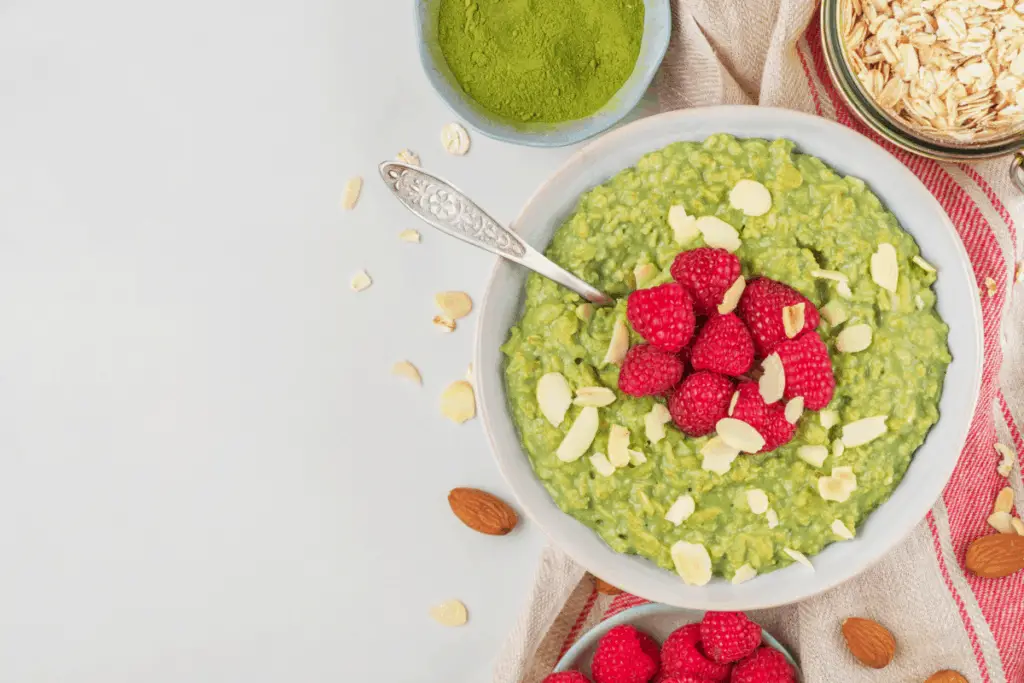
Pairing #1: Granola with Berries and Matcha
This is another simple way to work some more matcha into your life. You can either sprinkle it in with the granola, or, you can make a paste and work it into the milk or yogurt you prefer with your granola. You should try making a paste with milk, even if you’re having your granola with yogurt. A milk and matcha paste with mix right in with the yogurt, without chunks of match powder.
Pairing #2: Matcha Pancakes
This is a deliciously unexpected breakfast treat that’s become a staple in our home. Add a teaspoon, or two for larger batches, to your regular pancake recipe along with the dry ingredients. Or, if you’re using a mix, just add the matcha before you add the milk. Top your pancakes with your favorite syrup, honey, or agave.
Pairing #3: Chocolate and Matcha Butter Bites
Use coconut butter and matcha powder where you might otherwise use peanut butter. The coconut butter and matcha powder together make a similar consistency.
You can either roll it into balls along with oats and chocolate chips or use melted chocolate to create chocolate and matcha butter cups. Either way, you’re winning with this sweet treat.
Pairing #4: Matcha Oatmeal
Simply sprinkle some matcha powder over your favorite oatmeal before you make it. Or, make a paste with milk and swirl it though the oatmeal after it’s already hot. Delicious, both ways. Try adding chia or flax seeds for an added healthy bonus.
Pairing #5: Matcha Rice
Yes, it’s true that the flavors of matcha usually lend themselves better to sweet applications. But there are a few places that matcha works well with some savory dishes too. Rice is one of them.
Of course, you’ll want to make a paste with the matcha before adding it to boiling water and making rice. It doesn’t make the rice too sweet, but it really does add a nice sweet element to the overall flavor.
Pairing #6: Matcha Cookies
You can make just about any cookie recipe a smidge better with a little baby scoop of matcha powder. But, the old faithful sugar cookie and chocolate chip recipes are hard to beat.
Pairing #7: Eggs Benedict with Matcha Hollandaise
You have to try this, even though it seriously sounds weird. Because why not. What do you have to lose? Matcha is added to the Hollandaise sauce along with the other dry ingredients.
The matcha flavor is just the perfect contrast to the richness of the eggs and hollandaise. It’s really a magical bite.
Pairing #8: Matcha, Ginger & Sesame Salad Dressing
One more savory one, just for good measure. And, because it’s amazing. Once you add matcha to a ginger-sesame dressing, it’s tough to go back. It will become a staple you keep in your fridge at all times.

The ingredients for this simple vinaigrette are fairly standard, with the addition of matcha:
- Olive oil
- Rice wine vinegar
- Miso paste
- Ginger (freshly grated is most delicious)
- Sesame oil
Make your matcha paste with just a touch of oil. Add the ingredients and whisk, whisk, whisk. It’ll be a lovely shade of green, with an incredibly bright flavor. Use it with an Asian chicken salad and you will not be disappointed.
Just a Sprinkle
There are plenty of ways to mix matcha in with recipes. But, it’s also perfect for just sprinkling on top of certain foods. Two of the options below aren’t exactly healthy, but they are fun ways to indulge once in awhile.
Here are a few favorites that just pair so great with matcha.
Vanilla Sandwich Cookies
So, this being on the list is a little lie: you don’t exactly sprinkle the matcha on top. You have to open the sandwich cookie and sprinkle the matcha inside. Then you can replace the top, or not. Be prepared, you won’t be able to eat them any other way from this point forward.
Ice Cream
You might want to give your matcha powder a quick little smoosh with the back of a spoon to make sure that it’s extra smooth to avoid clumps, but if you do get a chunk or two, it’s not terrible. Then, just sprinkle it all around your ice cream and enjoy!
Toast
Toast your bread and add just a touch of butter or even honey. Then sprinkle just a tiny bit of matcha powder all around the top while it’s warm. You won’t be sorry.
What Exactly is Matcha Tea?
Tea is a common beverage that’s been enjoyed around the world for a very long time. And, there are hundreds of different kinds. But usually, the tea leaves are steeped in hot water, allowing the flavors to sink in, and then they’re removed and tossed out.
Matcha tea is different in that you actually drink the leaves. The word matcha actually means “powdered tea.” And that’s just what matcha is. Green tea leaves that have been ground into a powder and mixed with water.
How is Matcha Different from Other Teas?
Because the actual leaves are consumed when drinking matcha tea, they are given extra attention and care during the growing process. Matcha tea does come from green tea, but the plant itself is shaded by a special cloth, just about a month before they’re hand-picked.
New leaves will grow during this shaded stage, allowing more flavor to develop. Once the leaves are picked, they’re steamed, and then stored. The leaves are given time to dry out before they’re processed and ground into matcha powder.
What Are the Health Benefits of Matcha Tea? 8 Boosts You Can Expect
It seems as though matcha is everywhere nowadays, and there must be a reason why it’s popping up on menus and shelves, more so now than ever.
While other teas are delicious, they don’t deliver as many benefits because no part of the plant is actually consumed. Only what makes its way into the drinking tea gets into the body.
Since matcha tea is the leaves, only in powdered form, there are many more nutrients that are able to make their way into the body, where they can start doing good.

Here are a few of those benefits.
Benefit #1: Offers Antioxidants
Antioxidants are magical little substances that protect our cells from getting damaged by “free radicals”. Free radicals are created by the body as a means of warding off stressors or other harmful things that are inside our bodies.
Here are some common antioxidants:
- Vitamin A
- Vitamin C
- Vitamin E
- Beta-carotene
- Lycopene
- Selenium
- Manganese
Benefit #2: Enhances Brain Function
Who doesn’t love a little brain boost?
With all of the research done on brain health, along with the aging process, we know that brain function is very much a use it or lose it situation. In order to preserve our minds and to keep them sharp, there are lots of activities to do, but also certain foods can help.
Matcha happens to be one of those.
In addition to aiding in memory functions, matcha has also been shown to help with strengthening attention span, as well as focus. There have been some studies done on the mental effects of matcha, but this is also reported by matcha enthusiasts.
Benefit #3: Helps Protect Vital Organs
Matcha has been shown to help inhibit natural damage that can occur with the liver and kidneys. By preventing these two vital organs from damage, matcha can help protect your health.
Of course, there are more than likely some outside factors that work along with the matcha tea, but every little bit counts. Matcha is an easy way to add an extra layer of protection.
Benefit #4: Helps with Weight Loss
Green tea is a proven weight loss agent. Since matcha tea is just the powdered version of green tea, it packs a little more power with its punch. Green tea, and matcha tea, aid in weight loss by boosting metabolism, and helping the body burn fat a little faster.
Benefit #5: Natural Detoxifier
We all know that our bodies have toxins swimming around, looking for a place to take up residence. And, even trying hard to eat clean and healthy foods that have little to no toxins doesn’t mean that there are no toxins in the body at all. They can still make their way in from environmental pollutants, and even products applied to the skin.
Our bodies do some detoxing on their own with various functions but adding a natural detoxifier to your diet is a healthy way to help angry little toxins work their way out.
Benefit #6: Promotes Mental Health
Again, we know that green tea has been used for many, many years, and helps your body to calm and relaxed. But, it also can help with overall mental health by allowing you more control over your own moods.
Benefit #7: Stronger Bones
As we age, bone density becomes a problem. There are many diseases associated with low bone density, and it can cause weakness, as well as fragile bones. Matcha tea has recently been shown to enhance bone density.
Benefit #8: Caffeine, Caffeine, Caffeine
Green tea itself has plenty of caffeine. But, with matcha being the actual leaves of green tea, there’s even more caffeine. More than even a strong cup of coffee. But, as opposed to a plan ol’ cuppa joe, matcha comes with all of these other benefits too.
How to Make Matcha Tea: 4 Simple Steps
A traditional cup of matcha tea is very simple to make. But, as we’ll discuss in just a bit, it doesn’t always taste great, depending on a few different factors.
Part of the secret to enjoying a great cup of matcha…and to ensure that it’s a good experience for you…is to know how to prepare it.
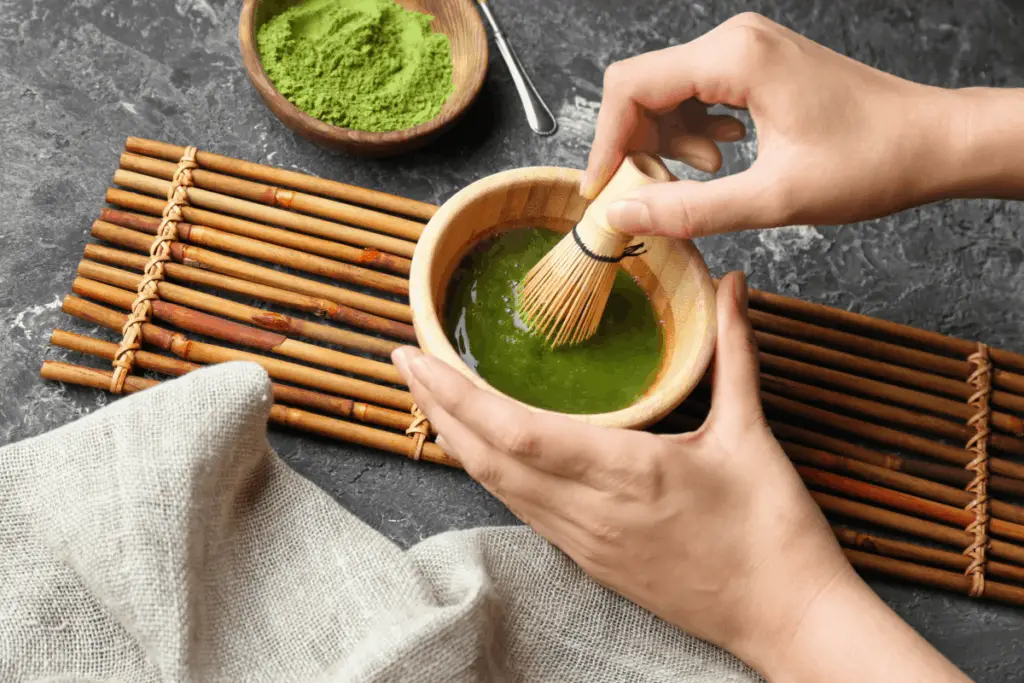
Making matcha tea can be a contemplative ritual, simply because it takes a few steps beyond simply steeping tea. Slow down and enjoy the process.

Here are the steps for preparing a great, healthy cup of matcha tea:
Step 1: Gather Your Tools
There are a few things you’ll need to make a proper cup of matcha tea that you probably don’t have just lying around the house.
So, before you get started, gather these items:
- Chasen- a whisk that’s handmade from bamboo
- Matcha-chawan- a special bowl just for tea
- Chashaku- a ladle that’s used specifically for measuring
- Tea Strainer
- Matcha Powder
- Teapot or other pot to boil water
Step 2: Measure and Scoop
Put your water in the chosen boiling vessel so it can work while you are. Use the chashaku to measure out about 1 ½ scoops of matcha powder. This is something you might want to adjust later, if you decide you prefer a thicker consistency in your matcha.
Step 3: Sift
Pour the scoops of matcha powder into the sifter, over the tea bowl. Use the ladle to gently help push the matcha powder through the strainer. This will help if there are any clumps hanging around. Nobody wants a chunk of matcha while they’re sipping tea.
Step 4: Combine and Whisk
Once the water is boiling, remove it from the heat. Allow it to cool just a bit, only a minute or two. You want it to still be very hot, so it can work with the matcha powder, but not hot enough to burn.
Use the whisk to carefully mix the matcha powder and the water together. The tea will be a beautiful green color, and it will become foamy after just about 15 seconds of whisking.
You can either drink it right out of the bowl or pour it into a teacup. Pay close attention to how the tea looks… and smells. Different matcha produce different smells. It’s really kind of exciting.
Choosing Matcha Powder
The quality of matcha tea varies greatly and picking the right one can really impact the overall outcome of your tea. The flavor is usually the first indicator that something’s off with your matcha, but a poor quality tea can also be lacking in benefits.
Matcha also has its own grading system to help you pick just the right matcha for what you’re making. These will come in handy when we get down to the fun and exciting ways to make matcha taste all delicious.
Ceremonial Grade Matcha Tea Powder
The highest grade of matcha tea available. It’s been used for centuries during Japanese tea ceremonies, so it’s not just a simple tea. Young green tea leaves are harvested and then stone ground for ceremonial grade matcha. The powder itself is a very bright green.
Ceremonial grade matcha powder is meant to be used for just making tea. It shouldn’t be added to anything or as an ingredient. There are other grades that are created for those purposes. So, if you’re looking for a simple yet delicious cup of matcha tea, with all of those wonderful health benefits, look for a ceremonial grade.
Culinary-Grade Matcha Tea Powder
This is what you’ll want to keep an eye out for on labels, when you’re preparing other foods and drinks with matcha powder. However, it’s a little more complex than just choosing ceremonial vs. culinary grade.
There are actually five more categories within culinary grade matcha powder that will help define the quality of matcha powder.
Here are the five categories of culinary-grade matcha:
Classic Grade Matcha Tea Powder
Classic grade is the most affordable option, but often comes with a bit of a bitter taste. It’s a versatile blend but does work best when it’s mixed with other flavors.
Kitchen Grade Matcha Tea Powder
Often sold in bulk, kitchen grade is a slightly more finely ground option compared to classic grade, but nothing nearly as smooth as ceremonial grade. But, for the purposes of making matcha taste yummy, this is a great one to start with for trial and error in new recipes.
Ingredient Grade Matcha Tea Powder
This is similar to kitchen grade, but even more finely ground. Are you seeing the trend here? Higher grades of matcha tea powder are indicated by the finer ground powders, and the younger leaves. This also impacts the price tag, since the higher grades are more expensive.
Ingredient grade is also great in recipes, but it goes especially well with anything that also uses milk or other dairy products.
Cafe Grade Matcha Tea Powder
Cafe grade matcha powder has the perfect flavor to be used as a standalone tea, or even mixed into other beverages. But, its flavor is also strong enough that it can be an ingredient in baking, where it can withstand the heat without burning or losing flavor.
Premium Grade Matcha Tea Powder
This is the highest grade of matcha powder available, outside of ceremonial tea. It’s very finely ground, and easy to mix with anything. It’s a very bright green, although not as vibrant as ceremonial grade matcha tea powder. But, delicious, nonetheless.
